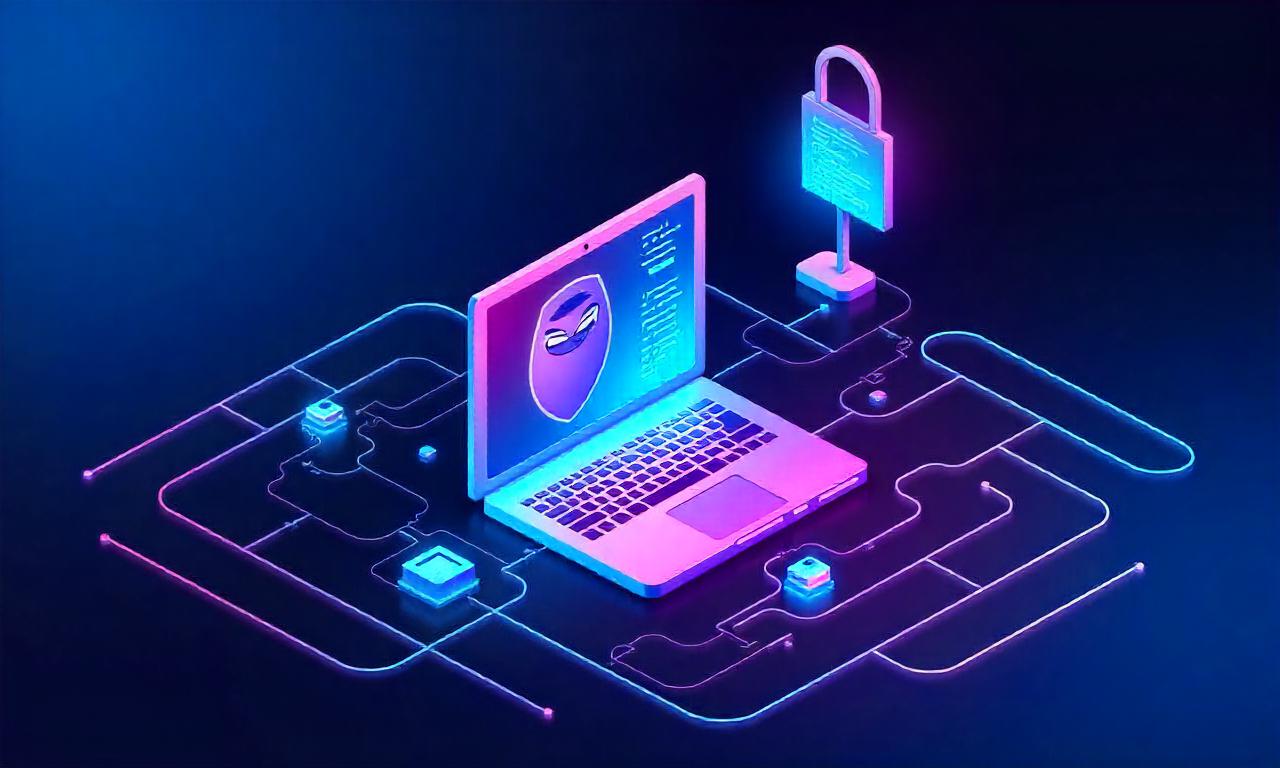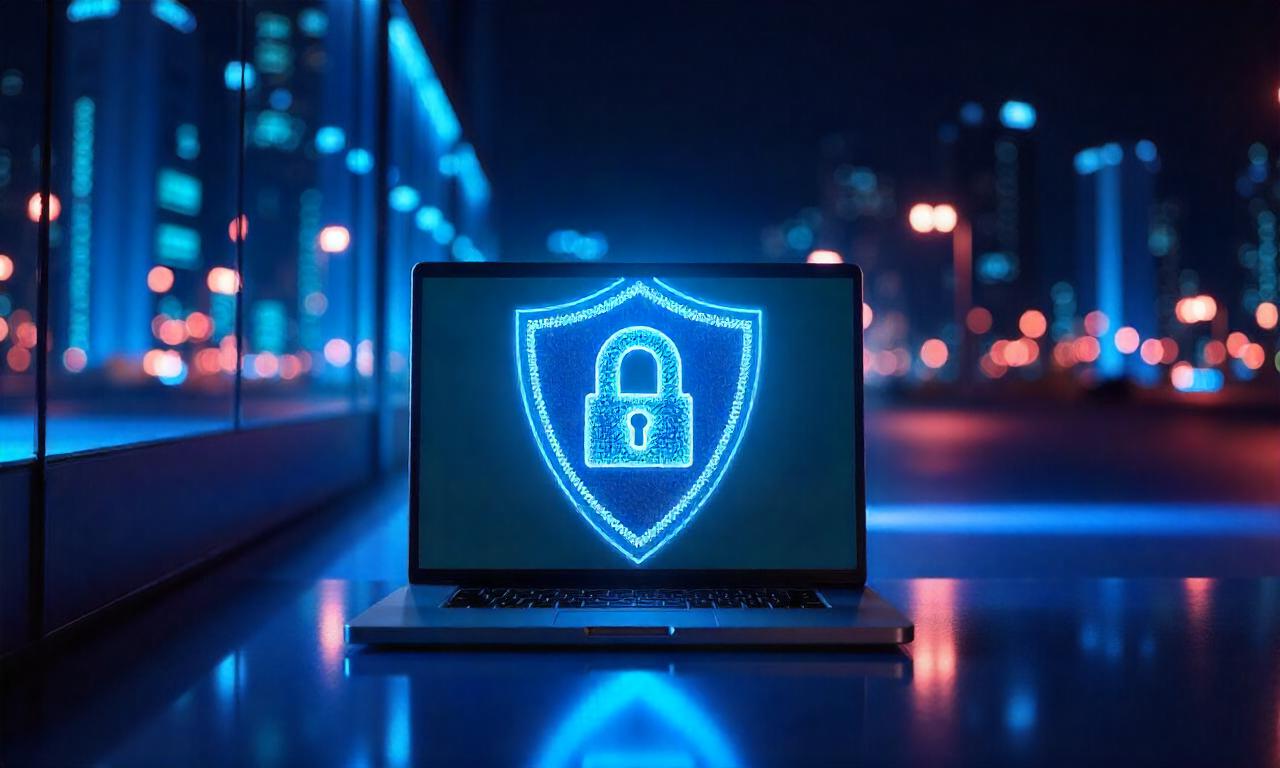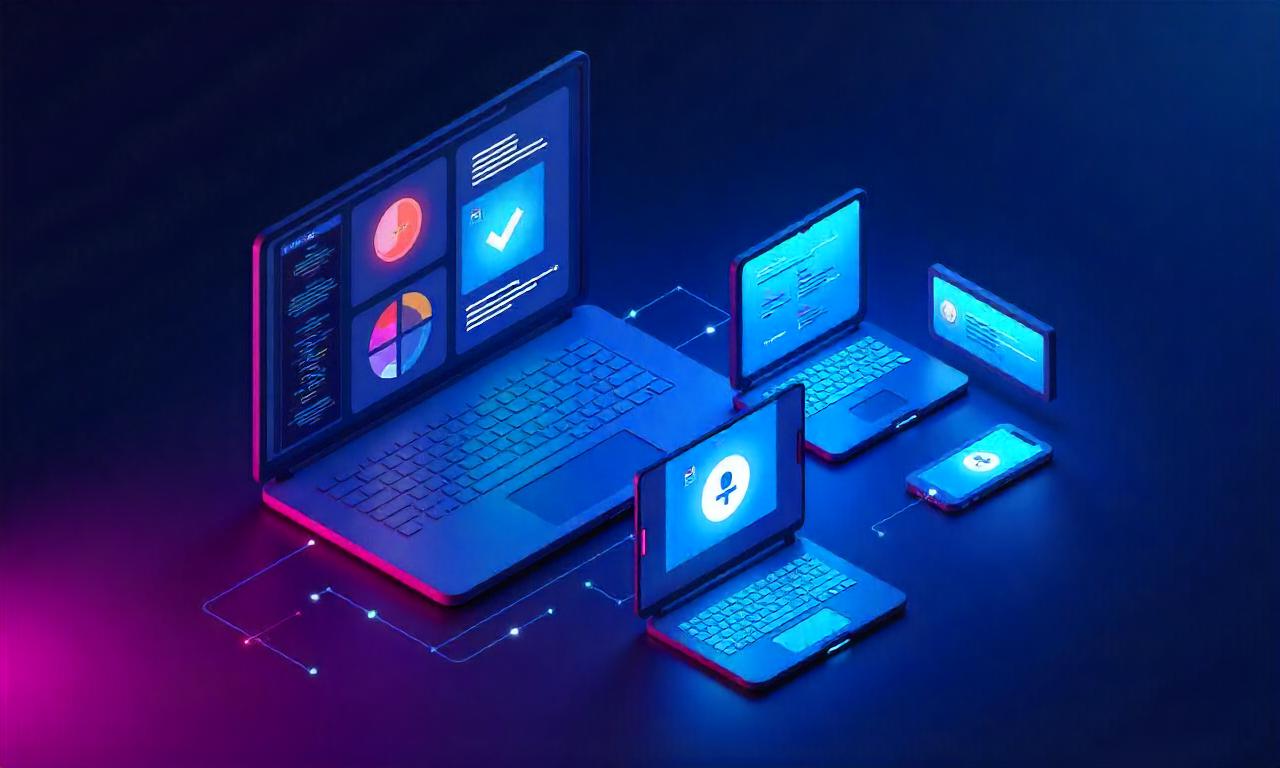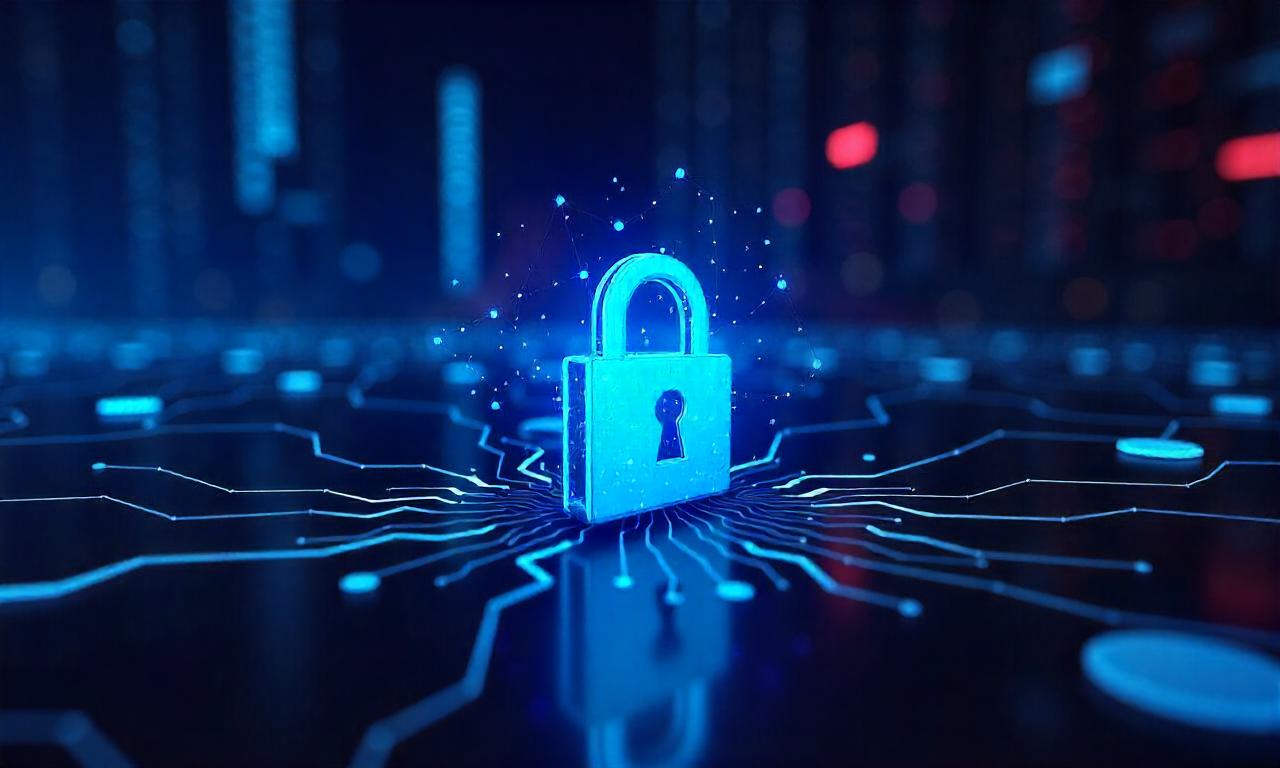VPN Pieces – Explore the cybersecurity threats in 2025. Stay informed on the evolving risks and learn how to protect your digital life from emerging dangers.
What cybersecurity threats will dominate in 2025? As digital environments grow more complex, new risks are emerging, threatening both individuals and organizations.
How can you stay ahead of these risks? Understanding the evolving nature of cyber threats in 2025 will help you better secure your online activities and protect sensitive information.
Table of Contents
ToggleCybersecurity Threats in 2025
1. AI-Powered Threats: The Rise of Autonomous Hacking
Artificial intelligence has revolutionized many industries—but cybercriminals are now using it as a weapon. In 2025, AI-powered threats are expected to dominate the cyber threat landscape, making detection and prevention increasingly difficult.
We’ve seen a shift from manual to machine-driven attacks. AI algorithms can now autonomously scan networks, identify vulnerabilities, and exploit them faster than any human hacker could. These intelligent systems adapt in real-time, evading traditional cybersecurity tools by changing attack patterns dynamically.
Cybersecurity teams must implement AI-based defense systems of their own to counteract these smart attacks. Behavioral analytics, anomaly detection, and automated incident response are no longer optional—they’re essential for survival in the face of these emerging cybersecurity threats in 2025.
2. Deepfake Cyber Threats: Manipulating Reality
The line between real and fake is disappearing. Deepfake technology, powered by generative AI, is being weaponized for cybercrime. In 2025, we anticipate an explosion of deepfake cyber threats targeting businesses and individuals alike.
These hyper-realistic videos and voice recordings can impersonate CEOs, financial officers, or public figures to initiate fraudulent transactions, manipulate stock markets, or spread misinformation. The implications for digital security and public trust are immense.
To combat this, organizations need advanced deepfake detection tools, employee training to recognize manipulated media, and strict verification protocols before acting on digital communications. As part of broader cyber defense strategies, we must stay ahead of this growing manipulation trend.
3. Quantum Computing Risks: The End of Encryption?
Quantum computing promises to solve complex problems at unprecedented speeds—but it also threatens to break current encryption standards. As quantum machines inch closer to practicality, our cryptographic defenses may soon become obsolete.
Hackers with access to quantum power could decrypt sensitive data, compromise secure communications, and dismantle financial systems. This represents one of the most formidable future cyber threats on the horizon.
To prepare, companies must begin transitioning to post-quantum cryptography, investing in research and collaborating with global standards bodies to ensure resilience. This shift is not optional—it’s a strategic necessity to withstand quantum computing risks and secure long-term digital trust.
Read More : The Importance of DNS Leak Protection in VPN
4. Ransomware Evolution: From Random to Targeted

Ransomware has evolved from random attacks into highly targeted, multi-stage operations. In 2025, cybercriminals will leverage AI-powered reconnaissance tools to identify high-value targets and personalize their extortion strategies.
These advanced ransomware attacks—often called Ransomware-as-a-Service (RaaS)—offer criminals a plug-and-play model to launch complex campaigns. They don’t just encrypt data; they exfiltrate sensitive files and threaten to leak them unless payment is made.
To defend against this, businesses must adopt zero-trust architectures, robust backup strategies, and employee awareness programs. Rapid incident response and real-time threat intelligence are crucial to mitigate these ransomware evolution challenges.
5. Phishing Innovations: Smarter, Sneakier, and AI-Led
Phishing attacks are getting smarter. In 2025, we expect to see AI-generated phishing emails that are grammatically perfect, highly personalized, and incredibly convincing.
Cybercriminals are now scraping data from social media, company websites, and public databases to craft spear-phishing emails that mimic real-life communication. These attacks can fool even the most tech-savvy users, making phishing innovations a persistent threat.
Security awareness training, email filtering powered by machine learning, and real-time alert systems are key components of a strong defense. As phishing becomes harder to detect, organizations must cultivate a culture of skepticism and vigilance.
6. IoT Vulnerabilities: The Weakest Link in the Chain
The Internet of Things (IoT) continues to expand, with billions of devices connected worldwide. But many of these gadgets—smart thermostats, security cameras, medical implants—lack proper security.
In 2025, IoT vulnerabilities present a massive attack surface. Hackers exploit unpatched firmware, weak passwords, and insecure network protocols to gain access to broader systems.
Enterprises and consumers alike must adopt secure-by-design devices, perform regular firmware updates, and segment their networks. The key is reducing exposure while maintaining usability—a delicate balance in the face of increasing digital security challenges.
7. Zero-Day Exploits: The Unknown Dangers
Zero-day vulnerabilities—flaws unknown to software vendors—remain one of the most dangerous cybersecurity risks in 2025. These exploits give hackers unrestricted access to systems before a fix is even available.
Cybercriminals are now buying and selling zero-day exploits on the dark web, with prices climbing into six-figure territory. Some are even state-sponsored actors, using them for cyber espionage and cyber warfare.
To reduce this threat, companies need robust patch management, bug bounty programs, and proactive threat hunting. The goal is to identify and mitigate vulnerabilities before they’re used in advanced cyber attacks.
8. Cloud Security Risks: The Data Exposure Dilemma

The shift to cloud computing has transformed business operations—but it’s also introduced a host of new cloud security risks. Misconfigured servers, unsecured APIs, and third-party integrations can lead to devastating data breaches.
In 2025, cloud service providers and clients alike must share responsibility for securing environments. Poor identity and access management remains a common entry point for attackers.
Best practices include multi-factor authentication, encryption at rest and in transit, and detailed audit logging. A robust cybersecurity forecast must account for the complexity of hybrid and multi-cloud ecosystems.
9. Supply Chain Attacks: Infiltrating Through Trust
Supply chain attacks—where hackers target third-party vendors to compromise larger organizations—are on the rise. The infamous SolarWinds attack was just the beginning.
In 2025, attackers will exploit the weakest links in digital supply chains to inject malware or steal data. These emerging hacking techniques bypass traditional defenses by arriving through trusted partners.
Organizations must conduct third-party risk assessments, enforce vendor security standards, and maintain a software bill of materials (SBOM). Visibility and accountability are crucial to thwart these supply chain attacks.
10. Biometric Hacking: Breaching the Human Firewall
Biometric authentication—fingerprints, facial recognition, voice patterns—is often seen as the pinnacle of security. But in 2025, biometric hacking will become a top concern.
Once compromised, biometric data can’t be changed like a password. Hackers are already using high-resolution photos, 3D printing, and AI modeling to spoof biometric systems. The threat to privacy and identity integrity is enormous.
Securing biometric systems requires liveness detection, multi-modal authentication, and encrypted storage. As we rely more on physical traits for security, protecting them becomes paramount in our cyber resilience challenges.
11. Critical Infrastructure Threats: Attacks on the Backbone
Water, electricity, transportation—our most vital services depend on digital control systems. In 2025, critical infrastructure threats will become more frequent and more impactful.
State-sponsored hackers may target power grids or water treatment plants to cause disruption or chaos. These attacks are not just financially damaging—they can put lives at risk.
Governments and private operators must collaborate on resilience planning, regular penetration testing, and air-gapped security solutions. Protecting critical systems is a national priority in the evolving cyber threat intelligence landscape.
12. Cyber Espionage: The New Cold War
Geopolitical tensions are manifesting in cyberspace. In 2025, cyber espionage campaigns will intensify, as nations attempt to steal intellectual property, military secrets, or political intelligence.
These attacks often go undetected for months, using stealthy malware and lateral movement within networks. The lines between criminal and state-sponsored actors are increasingly blurred.
Defending against espionage requires advanced monitoring, network segmentation, and a deep understanding of adversary tactics. Governments must invest in next-gen security threat countermeasures to maintain sovereignty in the digital realm.
13. Social Engineering Tactics: Exploiting Human Nature
Not all attacks rely on code—some target our psychology. Social engineering tactics are evolving, using deep insights into human behavior to manipulate users into handing over access.
From pretexting and baiting to business email compromise (BEC), these attacks exploit trust, urgency, and authority. In 2025, we expect more hybrid attacks that blend technical compromise with social manipulation.
Organizations must provide ongoing security awareness training, simulate real-world phishing attacks, and foster a culture of skepticism. Humans are both the weakest link and the strongest defense in the war against emerging cybersecurity threats in 2025.
14. Malware Advancements: From Destructive to Adaptive
Malware is no longer a blunt-force tool—it’s adaptive, modular, and stealthy. In 2025, we’ll see malware advancements that evade sandbox environments, mutate signatures, and persist after detection.
Polymorphic malware changes its code to avoid detection, while fileless malware operates in memory, leaving no trace on disk. These innovations make traditional antivirus tools nearly obsolete.
Cybersecurity teams need behavioral analysis tools, endpoint detection and response (EDR) systems, and constant monitoring to keep pace. Staying ahead requires not just tools—but a mindset of cyber threat intelligence and agility.
15. Privacy Invasion Risks: When Data Becomes a Weapon
As data collection increases, so do concerns about how that data can be used—or misused. In 2025, privacy invasion risks extend beyond advertisers to include surveillance, blackmail, and manipulation.
Location data, biometric info, and browsing behavior can be harvested, correlated, and weaponized. Whether by governments, corporations, or criminals, the misuse of personal data is a growing cybersecurity risk.
Strong data governance policies, encryption, and user consent controls must be prioritized. Privacy is a right—and defending it is a core part of any modern cyber defense strategy.
16. Cyber Resilience Challenges: Building Long-Term Security
It’s not just about prevention—it’s about recovery. In 2025, cyber resilience challenges will define how quickly organizations can bounce back from inevitable breaches.
Downtime, data loss, and reputational damage can cripple a business. Effective resilience strategies include disaster recovery plans, incident response playbooks, and business continuity protocols.
Resilience is a mindset. It’s about preparing not just for attacks—but for survival and recovery. The ultimate goal of cybersecurity is not just defense—but adaptive, sustainable protection in the face of an ever-changing threat landscape.
















